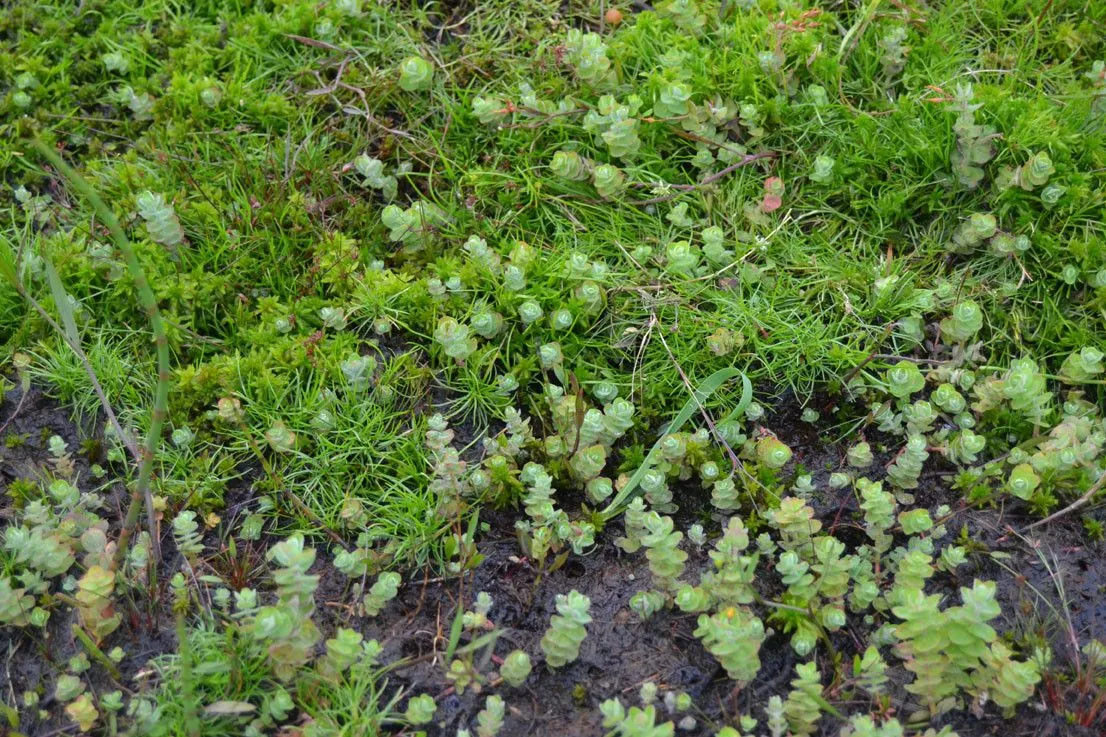
Author: (L.) R.Br.
Bibliography: Prodr. Fl. Nov. Holland.: 221 (1810)
Year: 1810
Status: accepted
Rank: species
Genus: Isolepis
Vegetable: False
Observations: Old World
Floating club-rush, known scientifically as Isolepis fluitans, is a notable member of the Cyperaceae family. Described in 1810 in the publication “Prodr. Fl. Nov. Holland.,” this species has a storied history and a notable presence in the Old World regions.
The plant is characterized by its unique ability to thrive in aquatic environments, often found in freshwater habitats such as ponds, ditches, and slow-moving streams. Its common name, floating club-rush, is derived from its growth habit and the distinct club-like structure of its inflorescence.
Isolepis fluitans exhibits slender, flexible stems that are typically bright green, enhancing its adaptability to waterlogged areas. These stems can float on the surface of the water, thus earning the plant its common moniker. The foliage is linear and grass-like, contributing to its delicate yet resilient appearance.
The defining feature of the floating club-rush is its inflorescence, which consists of small, tightly-clustered spikelets that resemble clubs. These spikelets are typically held above the water, allowing for pollination and seed dispersal with the aid of wind and water.
Ecologically, Isolepis fluitans plays an important role in its native habitats. The plant provides shelter and breeding grounds for various aquatic organisms, including insects and small invertebrates. Additionally, it contributes to the stabilization of sediment in its environment, preventing erosion and maintaining water quality.
From a botanical perspective, floating club-rush is an intriguing species due to its widespread distribution across the Old World. This wide range highlights its adaptability and role in diverse ecological settings.
In summary, Floating club-rush (Isolepis fluitans) is not only a fascinating botanical species due to its adaptability and distinctive physical characteristics but also an essential component of its natural ecosystem, contributing to the ecological balance in freshwater habitats across the Old World.
Deu: flutende schuppensimse
Dan: flydende kogleaks
Nor: flytesivaks
Eng: floating club-rush
Nld: vlottende bies
Swe: flytsäv
En: Floating Club-rush, Floating Mud-rush
Da: Flydende kogleaks
Nl: Vlottende bies
Fr: Scirpe flottant
De: Flutende Schuppensimse
It: Lisca natante
No: Flytesivaks
Sv: Flytsäv
: Floating club-rush
Taken Jun 9, 2004 by Andrew Gagg (cc-by-sa)
Taken Jul 16, 2022 by Genghis Attenborough (cc-by-sa)
Taken Aug 15, 2005 by Photoflora – Benoit BOCK (©)
Taken Aug 15, 2005 by Photoflora – Benoit BOCK (©)
Taken Oct 15, 2005 by Photoflora – Benoit BOCK (©)
Taken Aug 30, 2015 by Tela Botanica − Bernard THOMAS (cc-by-sa)
Taken Aug 30, 2015 by Tela Botanica − Bernard THOMAS (cc-by-sa)
Taken Apr 28, 2015 by Tela Botanica − Jean MAURE (cc-by-sa)
Taken Apr 28, 2015 by Tela Botanica − Jean MAURE (cc-by-sa)
Taken Jun 14, 2014 by Tela Botanica − Jean-Claude ECHARDOUR (cc-by-sa)
© copyright of the Board of Trustees of the Royal Botanic Gardens, Kew.
Taken Mar 13, 2019 by Leo Giardi (cc-by-sa)
Taken Aug 13, 2022 by Paul Masters (cc-by-sa)
Taken Jan 10, 2022 by luis hernandez (cc-by-sa)
Taken May 16, 2021 by Meadow_Mike Mike Hind (cc-by-sa)
Taken May 19, 2020 by carcinus carcinus (cc-by-sa)
Taken Mar 7, 2022 by Schnittler Martin (cc-by-sa)
Taken Mar 7, 2022 by Schnittler Martin (cc-by-sa)
Taken Jun 7, 2022 by Genghis Attenborough (cc-by-sa)
Taken Aug 15, 2005 by Photoflora – Jean-Luc TASSET (©)
Taken May 28, 2020 by Jutta Kemmer (cc-by-sa)
Taken Sep 15, 2005 by Photoflora – Benoit BOCK (©)
Taken Sep 15, 2005 by Photoflora – Benoit BOCK (©)
Taken Jan 1, 1970 by Photoflora – L’Abbé COSTE (©)
Taken Aug 15, 2005 by Photoflora – Jean-Luc TASSET (©)
Taken Jul 15, 2014 by Photoflora – Benoit BOCK (©)
Taken Jun 14, 2014 by Tela Botanica − Jean-Claude ECHARDOUR (cc-by-sa)
Taken Jun 30, 1879 by Tela Botanica − Herbier PONTARLIER-MARICHAL (cc-by-sa)
Growth habit: Graminoid
Ph maximum: 5.0
Ph minimum: 4.5
Light: 8
Atmospheric humidity: 9
Bloom months: [‘jun’, ‘jul’, ‘aug’, ‘sep’]
Soil nutriments: 2
Family: Myrtaceae Author: (F.Muell.) K.D.Hill & L.A.S.Johnson Bibliography: Telopea 6: 402 (1995) Year: 1995 Status:…
Family: Rubiaceae Author: Pierre ex A.Froehner Bibliography: Notizbl. Bot. Gart. Berlin-Dahlem 1: 237 (1897) Year:…
Family: Sapindaceae Author: Koidz. Bibliography: J. Coll. Sci. Imp. Univ. Tokyo 32(1): 38 (1911) Year:…
Family: Asteraceae Author: A.Gray Bibliography: Pacif. Railr. Rep.: 107 (1857) Year: 1857 Status: accepted Rank:…
Family: Fabaceae Author: Medik. Bibliography: Vorles. Churpfälz. Phys.-Ökon. Ges. 2: 398 (1787) Year: 1787 Status:…
Family: Aspleniaceae Author: (Cav.) Alston Bibliography: Bull. Misc. Inform. Kew 1932: 309 (1932) Year: 1932…